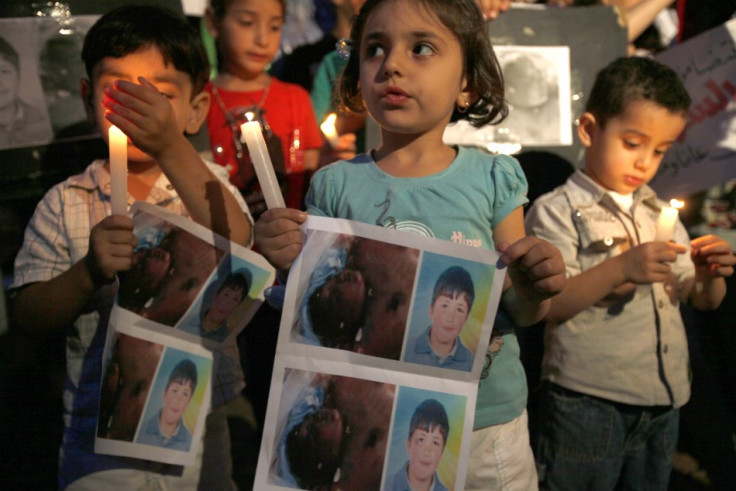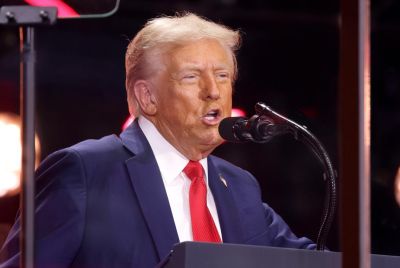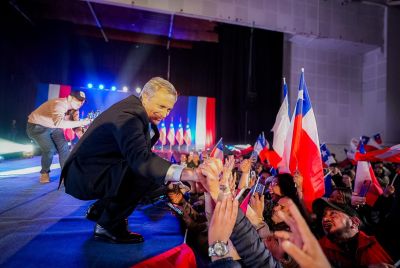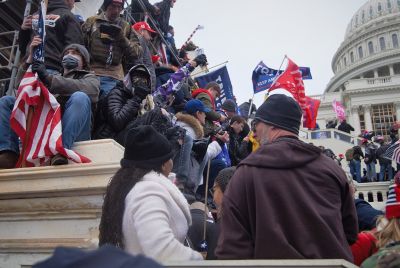Syria: Human Right Watch warns "We've never seen such horror"

The protests in Syria initially started after a group of 15 young boys, all under 18, were arrested in the city of Daraa, located in the southern part of Syria,after they were accused of writing graffiti slogans against the government on a wall. On March 18, after Friday prayers, thousands of protesters marched the streets demanding the release of the children, calling for greater political freedom and accusing the government and its institutions of corruption. The security forces originally responded to the protests with teargas and water cannons against the demonstrators before they started firing and ended up killing at least four people.
Following the unrest, the children were released but as they were tortured during detention they were returned with severe bruising and bleeding. The families of the boys repeatedly asked the local government agencies to punish those who were responsible but as their pkeas were ignored the protests grew larger, spreading from Daraa to the rest of the country. However, as the protests increased so did the killing of protesters and their arrests.
The Syrian authorities promised to investigate the killings but shamelessly denied any wrong doing, instead insisting that "terrorists group", "armed gangs", and "foreign elements" were those responsible.
In an attempt to suppress the movement, Syrian leader Bashar al-Assad has banned foreign journalists from the country and anyone attempting to film or otherwise report on events since mid-March has been subject to arrest and torture by the security forces. However with so much modern technology available, the dictator cannot stop the flow of information and defiant civilians have managed to posts hundreds of mobile phone videos on the Internet, thus widely documenting the regime's practice of assaulting unarmed civilians with tanks, artillery and automatic weapons.
One video showing the mutilated body of 13-year-old Hamza Ali al-Khatib, who was arrested and murdered by security forces, has horrified the world and inspired more protests across Syria. Activists insist he was tortured and killed by security forces, while the latter deny he was tortured.
Khatib, like the market-seller Mohamed Bouazizi who set himself alight in Tunisia and Neda Agha Soltan whose dying moments were filmed and distributed in Iran, has become a potent symbol to protesters demanding more freedom.
Confirming the extent of the atrocities committed by the government, on Wednesday Human Right Watch published a report called:" We've never seen such horror."
The document is considered to be an important and much needed contribution as it provides external countries with direct knowledge of what really took place in Daraa.
Based on interviews with more than 50 residents and a review of dozens of videos, the group concluded that at least 418 people have been killed there over the course of 10 weeks and that the regime's "abuses qualify as crimes against humanity." The document also calls for prosecution at the International Criminal Court, at The Hague.
The report constitutes a brutal account of the situation as it describes in detail what has been inflicted on the community of 80,000 people and its suburbs.
It states that "In most cases, especially as demonstrations in Daraa grew bigger, security forces opened fire without giving advance warning or making any effort to disperse the protesters by non-lethal means."
"From the end of March, witnesses consistently reported the presence of snipers on government building near the protests, deliberately targeting and killing protesters. Many of the victims sustained head, chest and neck wounds, suggesting that they were deliberately targeted."
Also, the regime has falsely accused the protesters of initiating violence and denied them medical assistance on numerous occasions, leading to the deaths of people that could have otherwise survived.
On April 25, an 11-day siege of the city began, during which anyone taking to the streets, including children seeking food or medicine, were fired on by troops or rooftop snipers.
When thousands of people marched on the town April 29 in an effort to break the siege, troops again opened fire, killing at least 62, according to the report.
The document also explains that most of the released detainees affirm they were subjected to various form of torture and degrading treatment. The technics employed included "prolonged beatings with sticks, twisted wires and other devices, electric shocks administered with tasers and electric batons, use of improvised wooden and metal racks and in at least one case the rape of male detainee with a baton."
Two of the witnesses interviewed by Human Rights Watch were among thousands detained in Daraa's soccer stadium on May 1 when, they said, security forces arbitrarily selected a group of more than 20 young men, lined them up and gunned them down. Other witnesses described an incident in which several soldiers who refused to shoot at protesters were themselves shot and killed.
As the Human Rights Watch report confirms what videos and social network pages set up by civilians previously indicated, which is that the Syrian regime is actively killing, torturing, persecuting and oppressing its own people, the lack of reaction from the International community is as infuriating as it is frightening.
It seems surreal that the UN Security Council has so far failed to concretely condemn the violence and is still working on a resolution that is only at the stage of a draft. Commentating on the slow response of the community, Murhaf Jouejati, a Syrian-born professor of Middle East studies at the National Defense University said:
"The Assad regime knows full well that there are divisions in the Security Council. They know that the U.S. will not intervene militarily in Syria. They know that there is going to be opposition in the Security Council by Russia and by China to condemn Syria,"
He added that as the political and economic costs of the crackdown are rising quickly, and he thinks there's no going back.
"The Assad regime has lost credibility, it has lost legitimacy, and what is going to be needed for it to fall is really a pincer movement between the international community and [the] domestic society that is in an uprising against the regime,".
The Assad regime might have lost its credibility but while the US State Department called the case of Hamza Ali al-Khatib "horrifying" and "appalling, President Obama has yet to unambiguously call for Assad to step down.
Secretary of State Hillary Clinton has reiterated on Tuesday that the administration "hopes" that "the Syrian government will end the brutality and begin a transition to real democracy" but has not provided any evidence that the US would take any further actions.
"I think what that symbolises for many Syrians is the total collapse of any effort by the Syrian government to work with and listen to their own people," Clinton told a news conference. "I can only hope that this child did not die in vain..."
On the other hand, while the Arab League first issued a statement calling for "all Arab regimes to stop using force against demonstrators " they have yet to take any meaningful steps...
It seems that the Arab spring has had wider implications than first expected, as in addition to reveal the oppression exerted by dictatorial regimes and the sufferance of their population, it has also demonstrated that International institutions and organisations such as the UN, the AU and the Arab league are far from being efficient when it comes to conflict resolution and the protection of innocent civilians.
© Copyright IBTimes 2025. All rights reserved.




















